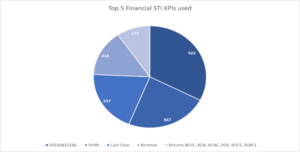
How to design your annual incentive plan during a pandemic
The novel COVID-19 pandemic has impacted many areas of the current landscape, including the socio-economic landscape and macroeconomic environment. Initially it was difficult to predict how long the pandemic was likely to last, however it has certainly continued longer than initial indications led us to believe. This has necessitated a refocus and directional change in executive compensation, among which is the annual incentive plan. Remuneration Committees (RemCos) have been reassessing and are discussing calculating bonuses by taking all stakeholders concerns into account.
Despite the pandemic, we witness several companies that are experiencing either a neutral or even a positive impact. Therefore, for some of these companies, executives may still get their Executive pay puts including their annual bonuses, as incentives plans are likely to be above target (even if not achieved at maximum). What must be noted, however, is that Chairs of Remuneration Committees (RemCos) should exercise discretion to reduce incentives to avoid ‘over-rewarding’ during a pandemic. With regards to companies that have experienced a moderate to negative impact, there are some issuers where we have witnessed a fight for survival as variable incentives have been cancelled. We expect that for many of these companies, pay negotiations will be focused on the future of a post-pandemic world.
Issuers issue cancellations to Annual incentives in the face of the plan
In the Russell 3000, our analysis showed that FedEx disclosed that it will not have an annual incentive plan for executive officers in FY21. Capri Holdings has also proceeded to changes, where it suspended its annual incentive plan for FY21 and will re-evaluate in order to determine whether any additional payments are necessary based on the performance for FY21 (the company actually also proceeded to change its KPI matrix and disclosed the performance metrics and goal-setting process that will be implemented when the plan is re-established post-FY21)
In Australia, four companies in the ASX 300 (Flight center, Auckland Airport, Vicinity center, IOOF Holdings) cancelled or suspended their 2020 Annual incentives. However, News Corp announced a 75% reduction in their annual incentive for the CEO.
For the TSX 250, we found that Ivanhoe Mines Ltd suspended short-term incentives for the year 2020 after cutting CEO pay up to 35%.
In the DAX, we saw that Adidas’ CEO also surrendered his bonus for the year 2020.
Current state of play to STI plans
Our data suggests that profitability measures (Cash Flow, EBITDA) remain the most used metrics by companies with specific disclosed plans, or followed by revenue, sales measures. Also, quite prevalent are returns/growth measures, such as ROCE, ROIC and ROE.


Changes to KPIs observed
Market findings suggests that a significant number of companies have reduced target or max payout opportunities for Annual incentive plans.
One of the most common changes to the annual incentive plan by issuers has been to add new non-financial strategic metrics. Profitability measures and revenue KPIs are likely to be less used post-pandemic.
Some issuers have been forced to reset performance goals based on updated forecasts, while others have also delayed goal setting for their Annual incentive plans.
One size may not fit all for annual incentive plans
Though we appreciate that the key to designing annual incentive plans may not necessarily be standard across all issuers, for industries such as tourism and airlines (that have been impacted the most by the pandemic) the 2020 annual plan is essentially not redeemable at this point. Executives would have to strive to work hard to operate the business and respond to an unusually difficult atmosphere. The Boards, of course, need to maintain the focus of its Executives and create incentives for them that will align their interests with that of the stakeholders of the companies. With the financial plans being affected (and being subject to many unknown factors soon) the Boards need to decide what the best approach is in order create the incentives for the year.
More than Seven months into the pandemic, there is still a degree of vagueness and uncertainty around Executive pay and annual incentives remains high for many companies and industries across various jurisdictions. In line with expectations, adjustments to executive pay plans and short-term incentives, will be subject to challenges. For some issuers, there may be no opportunity to pay bonuses in 2020 because of their inability to meet KPIs. However, we recommend that it may be prudent for RemCos to reset new objectives and/or KPIs for the year 2021. As 2020 is almost complete, it may not be feasible for Boards to adjust goals for the remaining part of the year. Despite this, management and their boards should be able to preserve the entities’ ability to survive during this pandemic and into the foreseeable future.
Per our assessment, incorporating KPIs around some of these measures may be useful for 2020/2021 financial years respectively:
Benchmarking
One measure that we recommend is for issuers to incorporate relative performance to their closest peers in their annual incentive plan designs. Prior to the pandemic, peer benchmarking was mostly limited to the long-term incentive plans of the companies. It can be shown that including similar benchmarks to the annual incentive plans might be useful and serve the purpose of avoiding over-compensating the executive, while at the same time still incentivizing them. Across our universe, we have found that only nine companies had peer benchmarking in their annual incentives for the year 2019. Additionally, benchmarking company performance to pre-crisis levels may also be beneficial to all stakeholders.
Measures to help safeguard investor interest
Perhaps one of the roads to recovery is to incorporate stock price performance relative to pre-crisis levels. Another KPI, which may be useful and appealing to shareholders, is how soon issuers are able to bounce back to dividend payments and share buybacks. This is centered around cash back to investors, which signifies a strong liquidity.
Emphasis on display of Crisis management in leadership
For all other stakeholders such as employees, it will be useful to see how executives apply more agility in decision making, retain jobs for employees and restore broad-based reductions.
Conclusion
For many companies, the current uncertainty seems likely to continue until the end of 2020 and possibly into 2021. It has therefore become necessary that RemCos consider all stakeholder interests in designing short term plans (Annual Bonus). This should be geared at incentivizing executives to steer recovery plans for companies to safeguard all stakeholders’ (investors, employees, government) welfares.